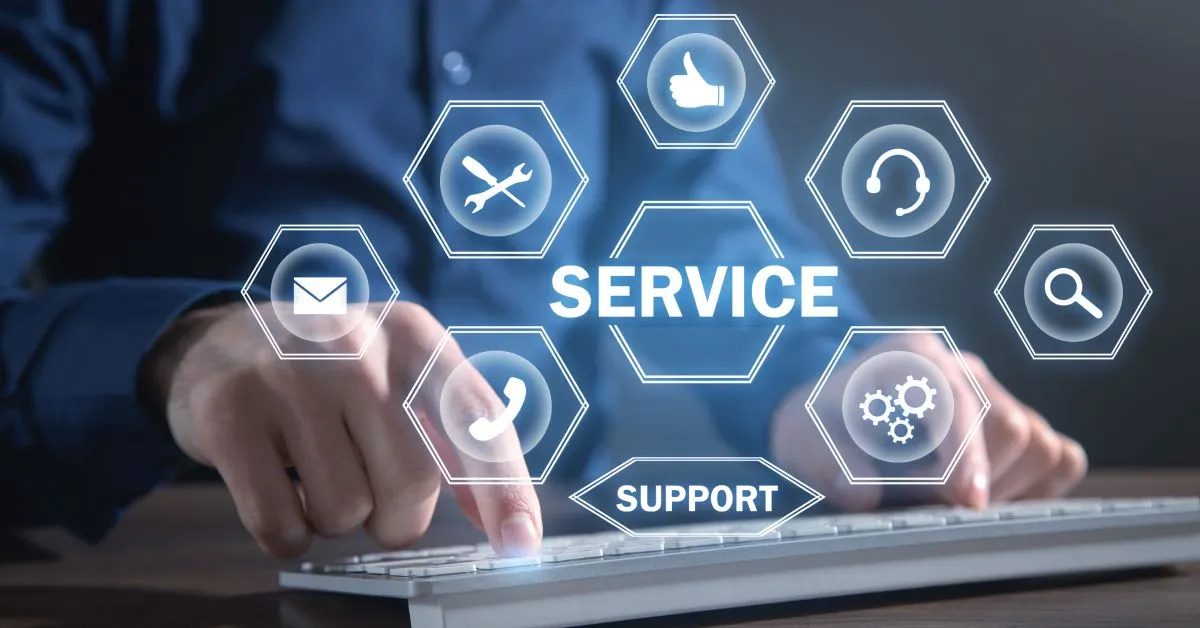- Home
- Call Center
- A 2024 Guide to Inbound Call Center
A 2024 Guide to Inbound Call Center

Keep yourself in the position of a customer service representative in an inbound call center. It’s a busy Monday morning, and the phone hasn’t stopped ringing since you logged in. Each call could be a problem or a possibility.
This is the world of inbound call centers, where every call is an opportunity to provide excellent customer service and solve new challenges.
If you are planning to build an inbound call center. This guide is for you where we will discuss everything related to inbound call centers and how to pick the right one for your business.
Table of Contents:
- What is an Inbound Call Center?
- What is the Difference Between an Inbound and Outbound Call Center?
- How Does an Inbound Call Center Work?
- Advantages of Inbound Call Centers
- How to Pick the Inbound Call Center Software for your Business?
What is an Inbound Call Center?
Facilities designed to handle incoming calls from customers are called inbound call centers. Here, customer service representatives or agents receive customer calls for assistance, support, or information.
The primary objective of an inbound call center is to address customer inquiries by providing assistance and resolving issues.
Inbound call centers typically employ agents trained to handle customer interactions efficiently. They may use software systems to manage incoming calls, direct them to a suitable agent or section, and track interactions for quality assurance and inquiry purposes.
What is the Difference Between an Inbound and Outbound Call Center?
As the name suggests, inbound call centers receive incoming calls from customers, and outbound call centers make outgoing calls to shoppers.
Both involve customer interaction over the phone; however, inbound call centers primarily handle incoming calls and focus on providing customer support and assistance, while outbound call centers make outgoing calls and focus on sales, marketing, or other proactive communication initiatives.
Depending on customer demand, inbound call centers may experience fluctuating call volumes with high peaks. Outbound call centers have more controlled call volumes, as calls are planned and scheduled.
Inbound call centers are key to maintaining customer satisfaction and loyalty by efficiently addressing concerns. Outbound call centers often focus on expanding customer base and market reach.
How does an Inbound Call Center work?
Step 1: Customer Dial-In
The customer dials into an inbound call center and is greeted by an automated Interactive Voice Response (IVR) system.
This system presents the customer with a menu of options for common inquiries. The options might include technical support, billing, or order status. Advanced IVR systems can even understand natural language, allowing for a more conversational experience.
Once the customer selects the appropriate option, the IVR intelligently routes the call to the most appropriate department or agent within the call center.
Step 2: Agent Assistance
After the IVR routes the call, a qualified agent assists the customer. These agents are trained to handle specific inquiries and have access to valuable resources.
Step 3: Issue Resolution
The agent’s primary goal is to resolve the customer’s issue in a single call whenever possible. They will leverage their knowledge and access to resources and potentially consult with colleagues, if needed, to find a satisfactory solution.
Step 4: Call Wrap-up
Once the issue is resolved, the agent will typically:
- Summarize the key points of the interaction for the customer’s confirmation.
- Offer additional support or resources if needed.
- Document the interaction in the CRM system, including details of the issue, resolution, and any follow-up actions.
- Conduct a brief survey (optional) to gauge customer satisfaction with the service provided.
Advantages of Inbound Call Centers
Inbound call centers offer businesses a wide range of benefits, helping them improve customer satisfaction, brand image, and operational efficiency. Let’s take a closer look:
1. Enhances Customer Experience and Loyalty
Inbound call centers provide a dedicated channel for customers to receive prompt and personalized support. This leads to quicker resolution of issues, increased customer satisfaction, and fostered loyalty.
2. Boosts Brand Reputation
Happy customers are more likely to share positive experiences with others. Inbound call centers ensure a professional and helpful approach to customer interactions, ultimately enhancing a company’s reputation and attracting new customers.
3. Cost-Effectiveness and Efficiency
Inbound call centers centralize customer service operations, potentially reducing overhead costs associated with maintaining in-house support staff across different locations.
Additionally, call routing and management technology to streamline call handling, allowing agents to handle more inquiries more efficiently.
4. Produces Data-Driven Insights
Inbound call centers generate valuable customer data through interactions.
By analyzing this data, businesses gain insights into customer preferences, buying behaviors, and areas for improvement.
These insights are then used to inform product development, marketing strategies, and overall customer-centric decision-making.
5. Offers 24/7 Availability and Flexibility
Some inbound call centers offer extended hours or even 24/7 operations, ensuring uninterrupted customer support. This flexibility caters to customers with varying schedules and time zones, leading to increased satisfaction.
How to Pick the Inbound Call Center Software for your Business?
Choosing a call center for your business can boost it to the next level. Here’s what to look for when picking the right inbound call center.
- Identify your Needs: The first major step is determining whether your business requires support for technical issues, customer inquiries, or another type of service.
- Select the Appropriate Technology: After deciding on your needs, you should select a call center that utilizes technology compatible with your existing systems and can scale up during peak periods.
- Agent Verification: Ensure agents are well-trained, have the necessary expertise, and can communicate in multiple languages if needed.
- Customization Capability: Look for a call center to tailor its services to your specific requirements.
- Performance Analysis: Check key performance indicators of the respected call center, such as First Call Resolution (FCR) and Customer Satisfaction (CSAT), to ensure they align with your business standards.
To Sum It Up
Inbound call centers can help you enhance your key metrics like CSAT and optimize your business operations.
Choosing the right inbound call center ensures you provide outstanding customer service, keeping your customers satisfied and establishing a positive reputation in today’s highly competitive market.
Related Post
Copyright © gocustomerexperience.com. All Rights Reserved.




